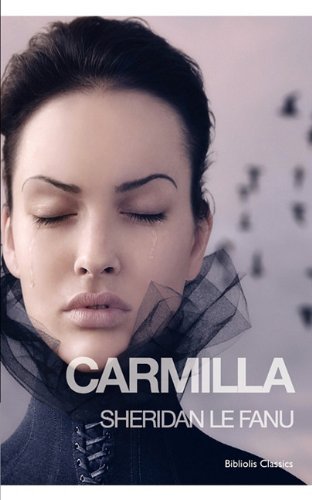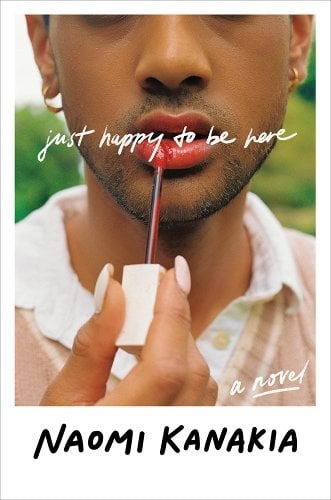Carmilla is a lesbian vampire novella that predates Dracula by over 25 years. I had been meaning to pick this book up for years, just based off that description, but I wanted to save it for an October read. This year I finally got around to it, and I think it makes the perfect quick sapphic Halloween read.
If you’re anything like me, you probably expect Carmilla to be pretty subtextual. This is the Victorian era, surely this isn’t a blatantly lesbian book? As I began to read it, though, I found more and more passages that were fairly straightforward. As the two girls meet, Laura and Carmilla, they hold hands, smile, and blush. Carmilla fawns over Laura, calling her darling, and making Laura confused and uncomfortable.
Sometimes after an hour of apathy, my strange and beautiful companion would take my hand and hold it with a fond pressure, renewed again and again; blushing softly, gazing in my face with languid and burning eyes, and breathing so fast that her dress rose and fell with the tumultuous respiration. It was like the ardor of a lover; it embarrassed me; it was hateful and yet overpowering; and with gloating eyes she drew me to her, and her hot lips traveled along my cheek in kisses; and she would whisper, almost in sobs, “You are mine, you shall be mine, you and I are one forever.” Then she has thrown herself back in her chair, with her small hands over her eyes, leaving me trembling.
Living in such an overwhelmingly heteronormative time, Laura can’t fathom why Carmilla would act like this. She asks whether they’re related, and muses that maybe Carmilla is a man in disguise trying to seduce her, like sometimes happens in storybooks. (This was a time so heteronormative that Boston marriages and romantic friendships were seen as totally acceptable for straight women.)
So how did a book so blatantly queer get published in 1872? Because Carmilla is a monster. Laura is simultaneously repulsed and attracted to this queer monster. But because she is a vampire, Carmilla’s actions and attractions are unambiguously cast as bad, therefore letting the story get told. (Lesbian pulp followed this formula: the ending had to punish the gay characters, to make the whole book seem like a warning, despite anything that happened beforehand.)
As Carmilla proves, vampires have been associated with lesbianism for more than a century. And this book shows how those fears can be tangled together in a straight society. The idea that the charming young woman your daughter is associating with could be the enemy, that she could invade your home under the guise of something as sweet and pure as female friendship: what a terrifying thought! The lesbian vampire is a monster in disguise, a monster that can appear as angelic as a young, fragile woman. Like lesbian pulp, this image is something I find hilarious now, but in the context of the time period does show the overwhelming homophobia of the environment. (Though even this iteration of vampire lore does offer some sympathy to Carmilla.)
This is a great read for a look at the beginnings of vampire lore as we know it now, as well as having the allure of being able to read a Victorian lesbian story. Unfortunately, the compromise is that the plot of Carmilla relies almost entirely on the reader not already knowing that Carmilla is a vampire, which is pretty impossible to miss as a modern reader. Luckily, this is a short book, and still well worth the read even with that caveat.




DarkestGayMoon (@rockerhelen2) says
Amazing review. Have you given the web series a try?
Danika @ The Lesbrary says
I have! It’s a lot of fun! I was a bit confused at the beginning because I thought it was supposed to be a re-telling, but I ended up really enjoying it.
Gabrielle says
This review is short and sweet! I’m just finally glad to see feedback on the novella that isn’t written by some, probably homophobic in some way or another, bitter old man. The reviews I’ve read are all so hateful in nature towards the mere idea of sapphic content in their fiction. (Carmilla’s pining for Laura isn’t even subtext, it’s extremely blatant!)
I’m also delighted to find a site dedicated to lesbian literature. It’s a nice surprise! 🙂
Gerd Duerner says
It’s strange how different we seem to read that story.
While I saw Carmilla as a truly tragic character, cursed to destroy those she loves – or is it to fall in love with those she has to destroy? – it didn’t occur to me to read this as a metaphor damning homosexuality.
I guess reading it without the regard of a Victorian context changes the meaning a lot.